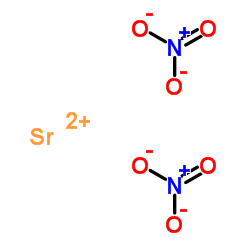Strontium is a potent and selective inhibitor of sensory irritation.
G S Hahn
Index: Dermatol. Surg. 25(9) , 689-94, (1999)
Full Text: HTML
Abstract
Irritant contact dermatitis occurs following topical exposure to many chemicals found in cosmetics, personal care products, drugs, and during occupational exposure. Signs and symptoms may include sensory irritation (sting, burn, and/or itch), erythema, edema, and vesiculation.In an attempt to discover new classes of anti-irritant compounds without anesthetic properties, I observed that topical application of strontium salts to intact skin produced potent suppression of sting, burn, and itch caused by many irritant chemicals.Chemically and biologically unrelated irritants were applied with or without strontium salts to the skin of healthy women with self-reported sensitive skin in double-blind, vehicle-controlled, random-treatment assignment trials and sensory irritation was assessed.Strontium application as a pretreatment or mixed with the irritant substantially suppressed sensory irritation without local anesthetic side-effects.Strontium salts represent a new class of selective inhibitors of sensory irritation and irritant dermatitis.
Related Compounds
| Structure | Name/CAS No. | Molecular Formula | Articles |
|---|---|---|---|
 |
Strontium nitrate
CAS:10042-76-9 |
N2O6Sr |
|
Electrochemiluminescent DNA sensor based on controlled Zn-me...
2015-07-01 [Anal. Bioanal. Chem 407 , 5579-86, (2015)] |
|
Combustion synthesis of Na2Sr(PO4)F:Dy3+ white light emittin...
2010-01-01 [Luminescence 25(1) , 9-13, (2010)] |
|
Handling interferences in ⁸⁹Sr and ⁹⁰Sr measurements of reac...
2014-08-01 [Appl. Radiat. Isot. 90 , 94-101, (2014)] |
|
Status asthmaticus in a paramedic following exposure to a ro...
1997-01-01 [J. Emerg. Med. 15(1) , 87-9, (1997)] |
|
Strontium nitrate suppresses chemically-induced sensory irri...
2000-02-01 [Contact Dermatitis 42(2) , 98-100, (2000)] |